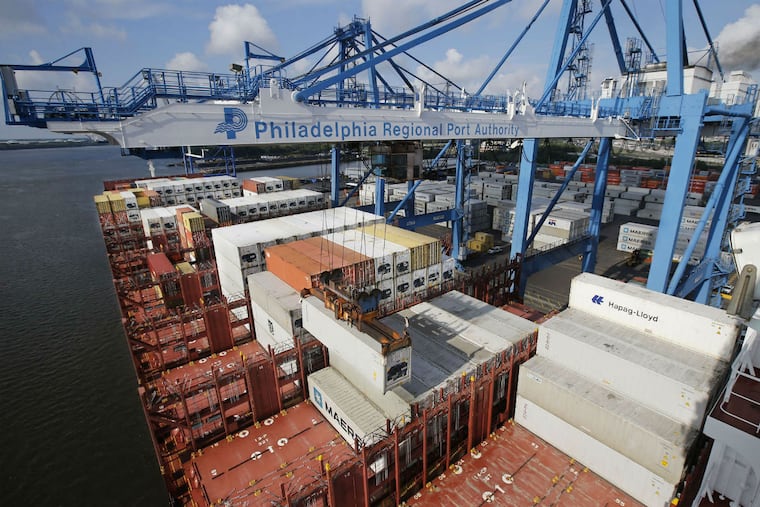The Philadelphia port gets a new name: PhilaPort
The Philadelphia Regional Port Authority chooses a shorter, catchier moniker.

What's in a name? The Philadelphia Regional Port Authority is betting a lot, and has chosen a shorter, catchier name: PhilaPort.
The port board and staff want to aggressively market Philadelphia to shippers around the world so that when they think about where to send cargo they think Philadelphia.
To be more recognizable in international trade, the PRPA announced it has changed its name, effective immediately. The agency hired a Maryland company to review the port's marketing and branding with an eye toward a fresh image and attracting new business.
"The name is short, clean, and memorable, and it reflects very simply who we are and what we do," said Jerry Sweeney, PhilaPort chairman. "The name PhilaPort helps distinguish us from the many other regional authorities and commissions as we seek to capitalize on the opportunities that will result from our expansion."
The Philadelphia port aims to be positioned for considerable growth, thanks to a $300 million investment from the Wolf administration to update terminals, wharves, and cargo cranes. Pennsylvania is landlord and owner of 15 piers and terminals on the Delaware River.
"I think it was an excellent move," said John Martin, a national port consultant based in Lancaster. "We used to call it the alphabet soup river because you had the PRPA, the DRPA, and the DRBA, and it was confusing.
"PhilaPort gives the port identify."
Other ports have changed their names. The Port of Miami is now PortMiami. The Port of Jacksonville, Fla., is JAXPORT. Boston's port is MassPort. The Port of Hueneme in California is Port Hueneme. "They do it for clarification. It's just easier to deal with," Martin said.
Sean Mahoney, PhilaPort's marketing director, said the name change "captures the new energy and all the things happening in the port now." The agency has a new CEO, Jeff Theobald. Gov. Wolf, named a port advisory board and announced $300 million to fix ship berths, buy new cranes, update and relocate warehouses, and double-cargo handling space aimed at creating hundreds of jobs.
The 103-mile deepening of the Delaware River navigation channel from 40 feet to 45 feet, allowing larger ships, is nearing completion. Additional rock will be blasted near Marcus Hook starting Dec. 1. Two more areas, in the upper Delaware Bay and between Chester and Wilmington, remain to be dredged. The entire $392 million project will be finished sometime in 2018, said Ed Voigt, spokesman for the U.S. Army Corps of Engineers.
"There's new leadership at the port authority. I think the name change is just one more initiative to enhance the port's position among competitors on the East Coast," said Dennis Rochford, president of the Maritime Exchange for the Delaware River and Bay, a trade group that promotes commerce on the river. "You've got a $300 million investment from the state. The channel will soon be completed. It's a lot of moving parts."
Several local agencies have "port" or "river" in their name, but one — the PRPA — has the mission of running a port and attracting maritime commerce. The DRPA (Delaware River Port Authority) is a transportation agency that collects tolls and runs four bridges and the PATCO High-Speed Line. The DRBA (Delaware River and Bay Authority) manages the Delaware Memorial Bridge, Cape May-Lewes (Del.) Ferry, and other entities.
Getting rid of the PRPA acronym "distinguishes Philadelphia from the rest of the ports on the Delaware River," Martin said, "and gets rid of the alphabet soup game."